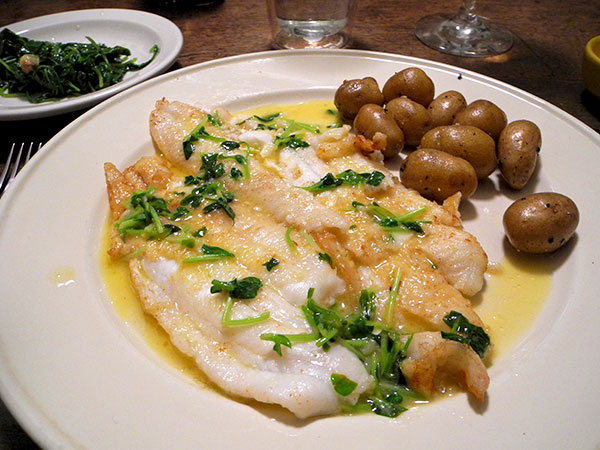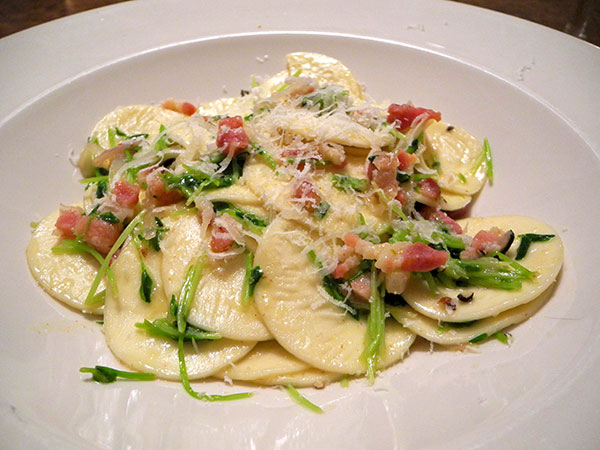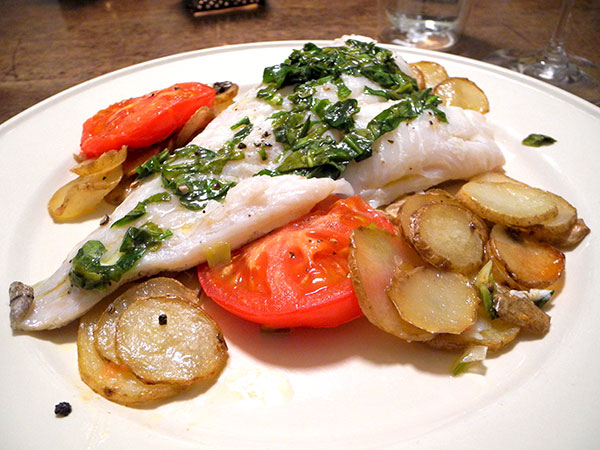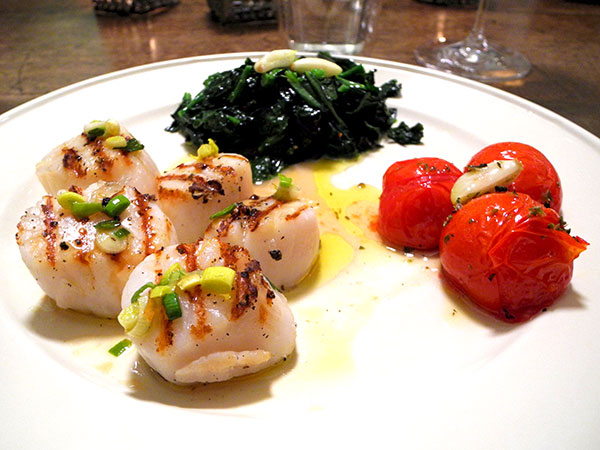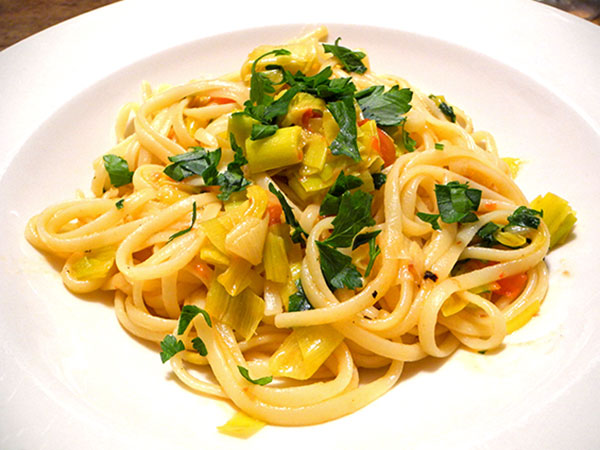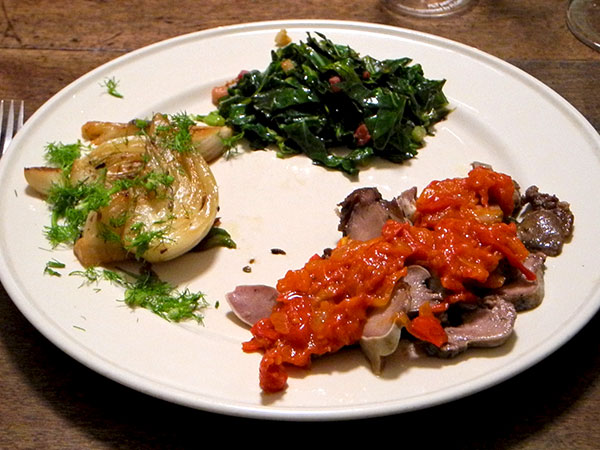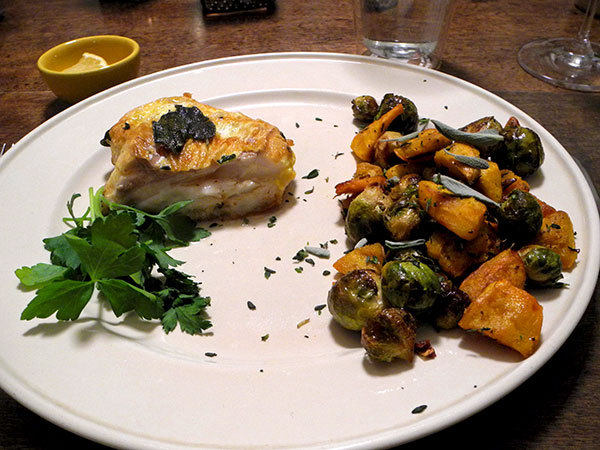We haven’t had swordfish for a while; this revisit this past Wednesday (March 25), was a reminder of why it’s held in such high regard, and not just by ourselves.
- swordfish steak (12 ounces, divided into two pieces) purchased from Charlie of American Seafood Company in the Union Square Greenmarket, herb, lemon, and garlic-rubbed (here using fresh oregano from Phillips Farm, parsley from Rogowski Farm, sage and mint from Eataly, thyme from Keith’s Farm, rosemary from Phillips Farm, along with zest of a lemon from Fantastic Gardens of Long Island and finely-minced garlic from Samascott Orchards, all chopped together with salt and pepper, and some of the mix reserved), then pan-grilled while basting with the reserved rub mixture, finished with a squeeze of the Fantastic Gardens lemon and a drizzle of olive oil
- a few ’18K Gold Nugget’ (actually, ‘Nicola’ in this batch) potatoes from Mountain Sweet Berry Farm, boiled in salted water, drained and steamed dry, rolled with a small amount of olive oil and freshly-ground black pepper
- collard greens from Rogowski Farm, cut in a rough chiffonade, braised in a heavy pot in which crushed garlic form Berried Treasures had been allowed to sweat with some olive oil, the dish finished with salt, pepper, and a drizzle of olive oil
- the wine was a Spanish white, Muga Bianco, Rioja 2013
- the music was the last act of Solti’s 1991 recording of ‘Carmen’

